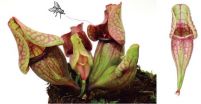(Press-News.org) March 16, 2015, New York, NY - Exploring the fundamental mechanism by which a cell-surface receptor transmits its signal, an international team of Ludwig researchers and their colleagues has established proof of concept for an entirely new approach to drug design. They report that a class of synthetic molecules known as diabodies can, from outside the cell, latch onto a target receptor and manipulate it in such a manner as to induce distinct and varying effects within cells and tissues. Led by Christopher Garcia of Ludwig Stanford, the researchers show in lab experiments how this might work, using a diabody to stall the growth of cancer cells isolated from patients with myeloproliferative neoplasms.
Published in the current issue of Cell, the study describes how diabodies that bind the erythropoietin receptor (EPO-R), which is involved in the generation of red blood cells, might be fashioned to essentially "tune" the signal it transmits into the cell. This is surprising, since the family of receptors to which EPO-R belongs--the cytokine family--are thought to be the biochemical equivalent of standard light switches: they're either on, or they're off.
"What we've shown is you can use diabodies to dial a cytokine receptor to induce a particular type and intensity of signal and so induce different effects in target cells and tissues," says Garcia.
Though cytokines are involved in many processes relevant to disease--especially those related to the immune system--their activation can have severe side effects. As a consequence, drug manufacturers have largely (though not exclusively) focused on blocking their signaling rather than activating it. A different class of receptors known as G protein-coupled receptors are, by contrast, far more amenable to "tuned" activation. This is partly why about half of all drugs in use today target such receptors, working in many cases like dimmers rather than switches.
"We wanted to test whether diabodies could be used to similarly tune the signaling of cytokine receptors," says Garcia. "This would open a new approach to therapeutics through the uniquely tailored manipulation of this medically important family of receptors."
Cytokine receptors are activated when their ligands--erythropoietin, in the case of EPO-R--bring two receptors together. This coupling has the effect of juxtaposing molecules already attached to each receptor known as Janus kinases (JAKs). JAK activation initiates a signaling cascade that, depending on the receptor and JAK type involved, turns on the expression of unique suites of genes. Mutations that affect either the JAKs or proteins further down in the cascade play a big role in autoimmune diseases and cancer, among other illnesses.
Garcia and his colleagues show that diabodies--and by extension, EPO--activate EPO-R by variably altering the structure of the part of the receptor outside the cell. Those changes, it appears, alter the geometry of the EPO-R segment inside the cell in a manner that activates JAK2, the JAK family member associated with EPO-R. Crucially, different diabodies induce different structural changes, affecting how vigorously the JAK2s are activated.
Myeloproliferative neoplasms, however, are fueled by a mutant JAK2 known as JAK2V617F that is constantly activated even in the absence of EPO. "To our surprise, one of the diabodies that only weakly activates EPO-R on normal cells was actually blocking signaling by the mutant JAK," says Stefan Constantinescu, a Ludwig Brussels researcher who participated in the study and is an authority on EPO-R signaling. "Our findings suggest this was due to the mutant JAKs being pulled further apart by the change induced in the receptor's structure."
Drugs devised from diabodies--if they prove effective against other cytokine receptors and are stable in the body--could be used to very specifically block pathologic signals while leaving the healthy variety alone, ameliorating symptoms of disease with minimal side effects.
Other Ludwig researchers involved in the study include Ignacio Moraga--a post-doctoral researcher in Garcia's lab who is first author on the study--Gerlinde Wernig, Irving Weissman and Ravindra Majeti of Ludwig Stanford. The work was supported by Ludwig Cancer Research, the Howard Hughes Medical Institute, the Belgian Federal Science Policy Office, the de Duve Institute at the Université catholique de Louvain and the Fondation contre le Cancer in Belgium. Chris Garcia is also an investigator with the Howard Hughes Medical Institute.
INFORMATION:
About Ludwig Cancer Research
Ludwig Cancer Research is an international collaborative network of acclaimed scientists that has pioneered cancer research and landmark discovery for more than 40 years. Ludwig combines basic science with the ability to translate its discoveries and conduct clinical trials to accelerate the development of new cancer diagnostics and therapies. Since 1971, Ludwig has invested more than $2.5 billion in life-changing cancer research through the not-for-profit Ludwig Institute for Cancer Research and the six U.S.-based Ludwig Centers. To learn more, visit http://www.ludwigcancerresearch.org/.
For further information please contact Rachel Steinhardt, rsteinhardt@licr.org or +1-212-450-1582.
Carnivorous plants have strange-shaped leaves, and they can grow on nutrient-poor environments by trapping and eating small animals. Charles Darwin, often called "the father of evolution", was also interested in carnivorous plants, and he wrote a book titled "Insectivorous Plants" published in 1875. Since then a lot of researches have been done, but how such strange-shaped leaves were altered during evolution remained unknown.
A research team in Japan has revealed how carnivorous pitcher leaves are formed in Sarracenia purpurea, a carnivorous plant native to North America. ...
Establishing protected areas in forests is one way to keep deforestation at bay and safeguard biodiversity. However, a study led by researchers from the National University of Singapore (NUS) has revealed that such a measure is ineffective in the case of biodiversity-focused protected areas in Indonesia.
The research, led by Assistant Professor Roman Carrasco of the Department of Biological Sciences at the NUS Faculty of Science and Assistant Professor Alex Cook of NUS' Saw Swee Hock School of Public Health, found that the monitoring and prevention of road construction ...
According to a meta-analysis published in BMC Family Practice, high dose zinc acetate lozenges may help shorten diverse symptoms associated with the common cold.
The common cold is an infection caused by over a hundred viruses, and it is a major cause of days off school or work and visits to a doctor.
A previous meta-analysis of three randomized trials found that high dose zinc acetate lozenges shorten the duration of colds by 42%. Since all of the three studies reported the duration of diverse respiratory symptoms and of systemic symptoms such as muscle ache and headache, ...
To increase the biomass of fish, contemporary ecological theory predicts that either the amount of food or the quality of the food has to increase. In a recent experiment, researchers at Umeå University doubled the fish biomass under identical food supply and food quality by only controlling how much of total food supply that was channelled to juvenile and adult fish, respectively. The results have major implications for the exploitation (harvest) of fish populations and the coexistence of predatory fish and their prey.
To increase the biomass of a population, contemporary ...
A means of reprogramming a flawed immune response into an efficient anti-tumoral one was brought to light by the results of a translational trial relating to breast cancer. Thanks to the innovative combination of mathematical modelisation and experimentation, only 20 tests were necessary, whereas traditional experimentation would have required 596 tests to obtain the same results.
The study was jointly conducted by Doctor Marie-Agnès Doucey (Experimental oncology, Centre Ludwig de l'UNIL pour la recherche sur le cancer), Professor Ioannis Xenarios (UNIL, SIB, Vital-IT) ...
The Menetries's tiger moth (Borearctia menetriesii) is the most rare and enigmatic representative among the Palearctic Arctiinae. During an expedition in almost inaccessible wild taiga area of Eastern Siberia, Russian scientists had the luck to encounter it. During their studies they also recorded feeding larva of this mysterious species on a native devil's helmet host plant for the first time. The study was published in the open access journal Nota Lepidopterologica.
The Menetries's tiger moth (Borearctia menetriesii) is the most rare and enigmatic representative among ...
Amsterdam, March 16, 2015 - Elsevier journal Maturitas, today announced the publication of a position statement by the European Menopause and Andropause Society (EMAS) covering the ten- point guide to the integral management of menopausal health. This has been written to mark the 10th EMAS Congress in Madrid May 20-22, 2015.
With increased longevity and more women becoming centenarians, management of the menopause and post-reproductive health is of growing importance as it has the potential to help promote health over several decades. Women have individual needs and the ...
The studies below will be presented at the American College of Cardiology's 64th Annual Scientific Session the morning of Saturday, March 14.
1. Depression May Influence Cardiovascular Outcomes
A new study adds to the evidence that depression may influence cardiovascular outcomes, prompting authors to call on cardiologists to pay closer attention to depression when managing patients with heart disease.
Researchers at Care Institute of Medical Sciences in India found depression to be independently associated with a greater chance of cardiovascular death and lower quality ...
Patients with symptoms of heart disease have similar outcomes in terms of death and major cardiac conditions regardless of whether they undergo a functional stress test or a computed tomographic scan, but the scan may be better at ruling out the need for subsequent tests and procedures in patients who are free of heart disease, according to research presented at the American College of Cardiology's 64th Annual Scientific Session in San Diego.
The PROMISE trial is the first-ever randomized controlled trial to compare clinical outcomes in patients receiving functional stress ...
SAN DIEGO (March 14, 2015) -- Adding the antiplatelet drug ticagrelor to aspirin as long-term therapy after a heart attack significantly reduced the rate of subsequent death from cardiovascular causes, heart attack or stroke, with the benefit appearing to accrue for nearly three years, according to a study presented at the American College of Cardiology's 64th Annual Scientific Session.
The double-blind PEGASUS-TIMI 54 trial recruited 21,162 patients who had experienced a heart attack in the previous one to three years. Each had another factor, such as age or diabetes, ...

